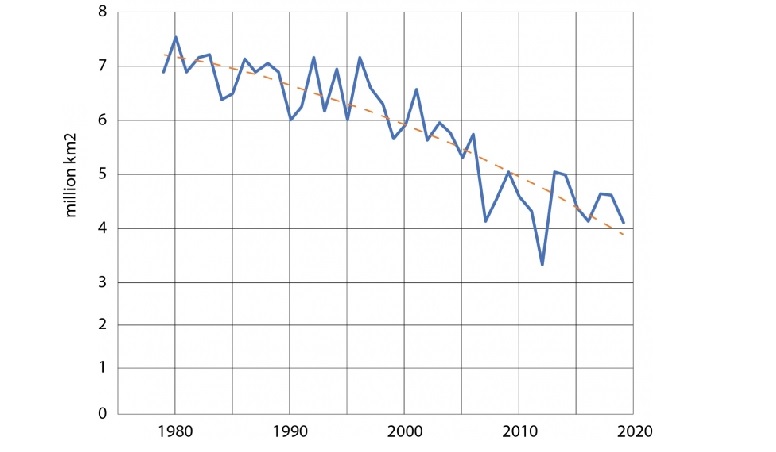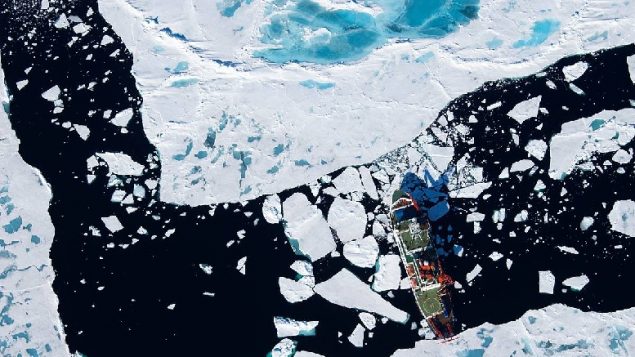Records show this year saw the second lowest September sea-ice minimum cover in the Arctic compared to the 2012 record minimum. October was unusually warm and as ice began reforming in late September, the ice has been slow to re-form. The minimum is usually reached during the first half of September and begins to re-form during the second half of the month.

Chart showing Arctic Ice cover 2019: Second lowest minimum, but record minimum for October. (NSDIC)
This year, with slow recovery, October ice level became a new record low for the month since satellite records began in 1979.
In addition to concerns about ice cover extent, the thickness of ice (related to its age) is also decreasing. The U.N. reports that five year ice (i.e- multiyear) has declined by 90 per cent since 1979.
Because ice reflects light, the greater extent of dark sea absorbs more heat from the sun exacerbating warming.

During the period monitored by satellites (1979-2019), the minimum Arctic sea ice extent in mid-September has shown a sharp decline (12.8 per cent per decade), which is likely to be unprecedented in the last 1,000 years. The summer of 2019 saw the second smallest extent of Arctic sea ice (after 2012).
Graph by UNEP/GRID-Geneva, based on data from the National Oceanic and Atmospheric Administration and the National Snow and Ice Data Center.
The U.N says that the implications from the gradually declining annual ice cover are world wide affecting heat balance with other environmental and ecological effects. Although they say the effects can’t be determined with certainty, but do note that the Arctic has an effect on the world’s atmospheric currents. This has been evident in Canada and the U.S. when the polar jet stream slows due to a lessened temperature difference between equatorial and polar regions. This leads to meanderings of the slower jet stream such that loops of frigid Arctic air dip much further south than usual and stay longer.
“Under the influence of global heating caused by human-induced greenhouse gases emissions, we have seen a sharp decrease in the extent of Arctic sea since 1979,” says Pascal Peduzzi, Director of GRID-Geneva, part of the UN Environment Programme (UNEP).
An polar research ship is currently frozen into the Arctic ice on a year long research effort called MOSAIC. A rotating team of some 600 scientists, will conduct a wide variety of experiments in studying climate issues and taking measurements from deep beneath the ice to the upper atmosphere to determin how the Arctic is changing, and what the various effects may be on the Earth’s climate.
Additional information-sources
- National Snow and Ice Data Center: Oct 3/18: Arctic ice conditions
- EarthSky: E. Imster: Sep 29/19: 2019 ice extent second lowest on record
- Nunatsiaq News; D. Patar: Oct 31/19: Across Arctic Canada sea-ice levels at record lows
- Mashable: M Kaufman: Nov 1/19: Alaska having a hell of a time growing sea-ice
- Euro News: R. Cereceda: Oct 31/19: Arctic ice reached record low in October
- CNN; T. Page: Oct 25/19: “Devastating”- Documenting the rapid loss of Arctic sea-ice (MOSAIC)







For reasons beyond our control, and for an undetermined period of time, our comment section is now closed. However, our social networks remain open to your contributions.